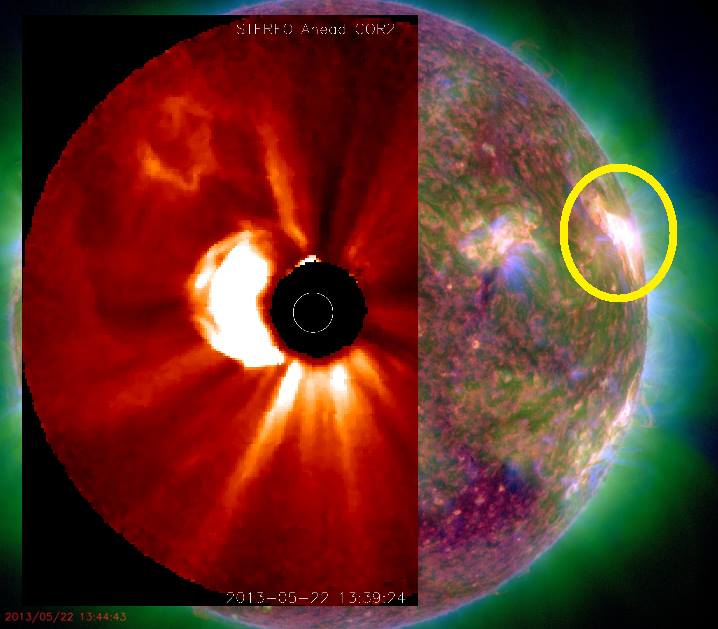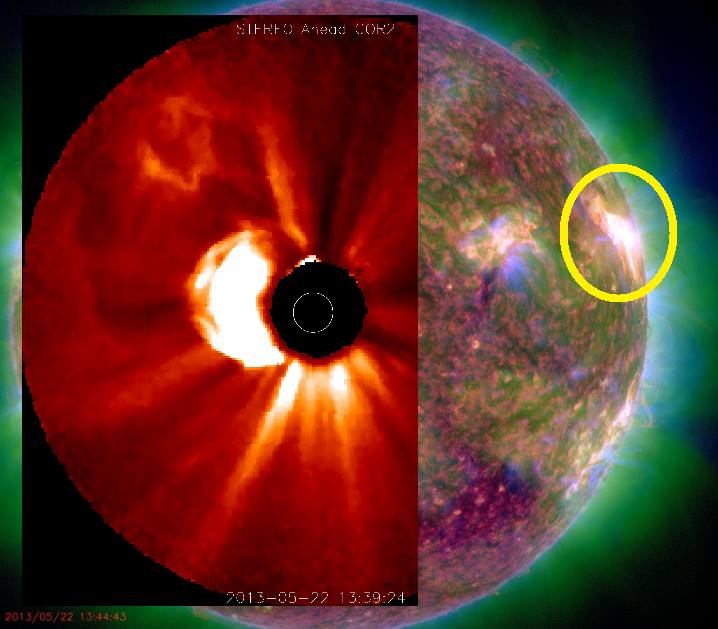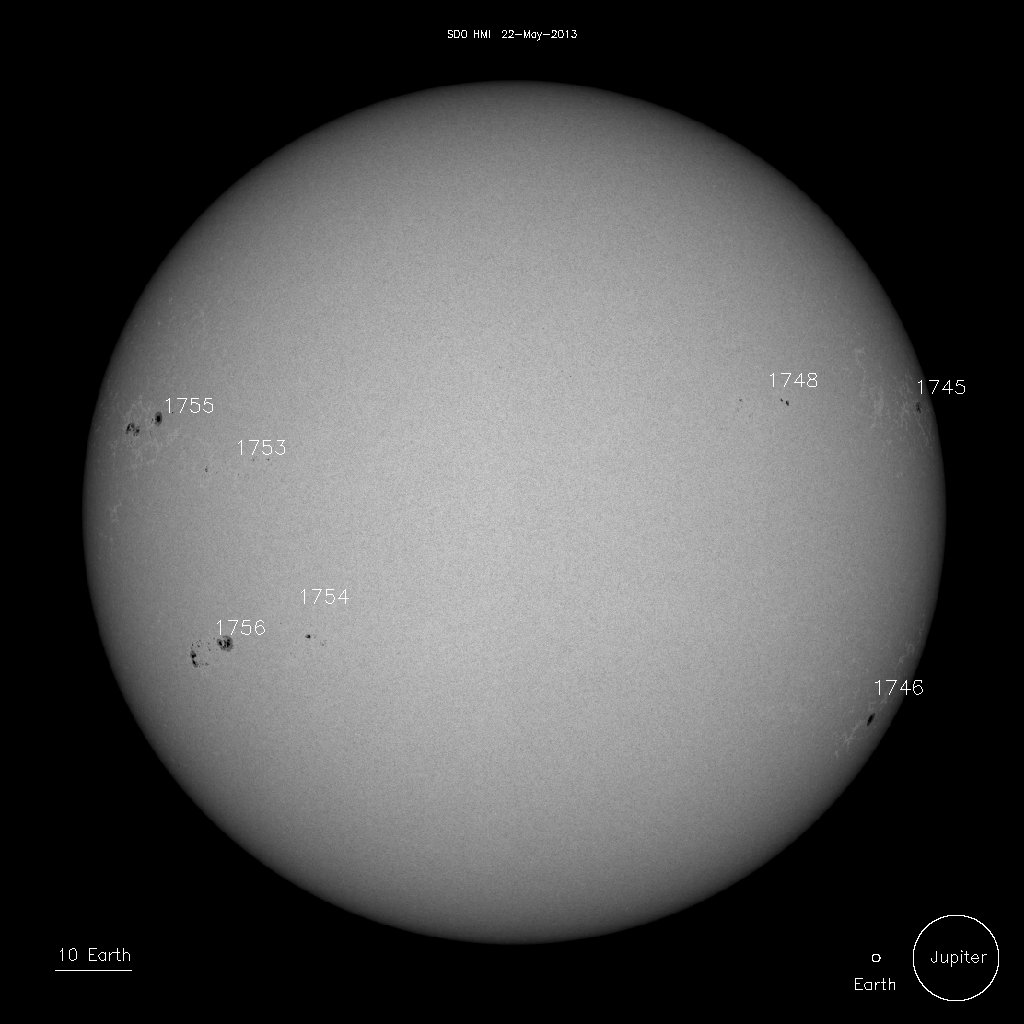Strong solar flare reaching M5.0 erupted from Region 1745 – CME released

A strong solar flare reaching M5.0 erupted on May 22, 2013 from Beta classified Region 1745 located on the western limb of the Sun.
The event started at 12:30, peaked at 13:38 UTC and ended at 14:26.
Associated with the event was a Type II and Type IV Radio Emission indicating a Coronal Mass Ejection (CME) is associated with a flare event. This CME could have an Earth directed component. A 10 cm radio burst was also associated according to report from SWPC. This can be indicative of significant radio noise in association with a solar flare. This noise is generally short-lived but can cause interference for sensitive receivers including radar, GPS, and satellite communications.
NOAA SWPC forecasters estimated 50% chance for an M-class event, and 20% for an X-class.
***
Space Weather Message Code: SUMXM5
Serial Number: 103
Issue Time: 2013 May 22 1443 UTC
SUMMARY: X-ray Event exceeded M5
Begin Time: 2013 May 22 1230 UTC
Maximum Time: 2013 May 22 1338 UTC
End Time: 2013 May 22 1426 UTC
X-ray Class: M7.3
Optical Class: sf
Location: N13W75
NOAA Scale: R2 – Moderate
Potential Impacts: Area of impact centered primarily on sub-solar point on the sunlit side of Earth.
Radio – Limited blackout of HF (high frequency) radio communication for tens of minutes.
***
Space Weather Message Code: ALTPX2
Serial Number: 53
Issue Time: 2013 May 22 1521 UTC
ALERT: Proton Event 10MeV Integral Flux exceeded 100pfu
Begin Time: 2013 May 22 1520 UTC
NOAA Scale: S2 – Moderate
Potential Impacts: Radiation – Passengers and crew in high latitude, high altitude flights may experience small, increased radiation exposures.
Spacecraft – Infrequent single-event upsets to satellites are possible.
Radio – Small effects on polar HF (high frequency) propagation resulting in fades at lower frequencies.
***

Sunspots
There are currently 7 numbered sunspot regions on the Sun. Well known Region 1748 has declined to Beta-Gamma magnetic configuration and is rotating toward western limb. Apart from Region 1746 classified with Alpha magnetic configuration all other regions are stable and classified as Beta.

1745 – Beta
1746 – Alpha
1748 – Beta-Gamma
1750 – Beta
1753 – Beta
1754 – Beta
1755 – Beta
1756 – Beta
Note: At the time of publishing the article available data showed M7.3 solar flare. X-ray flux data from GOES satellite had gaps that resulted in wrong information. We apologise for any inconvenience.
Featured image: NASA SDO/Edit: SolarWatcher

Commenting rules and guidelines
We value the thoughts and opinions of our readers and welcome healthy discussions on our website. In order to maintain a respectful and positive community, we ask that all commenters follow these rules.